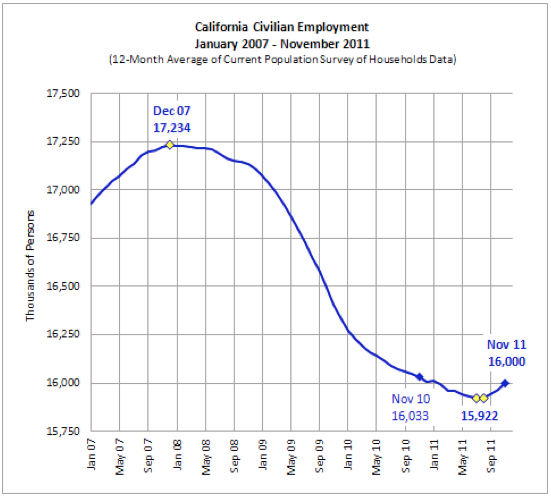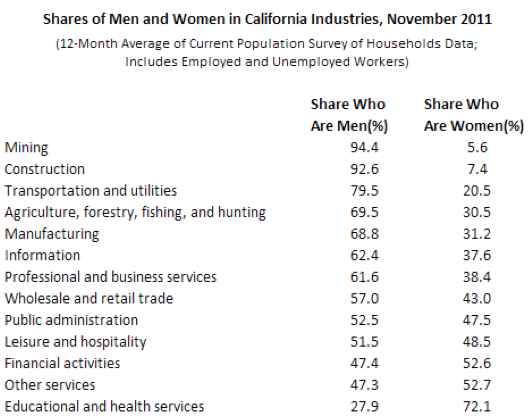On January 3, 2012, “Work It” premiered nationwide on ABC television, as a midseason replacement, and attracted 6.2 million viewers. The two main characters are unemployed men who are told the Recession has led to greater job loss among men than women. They decide their best chance at employment is to masquerade as women, and indeed as women do find jobs in sales at Coreco Pharmaceuticals.
The premier was widely panned, including being called “memorably bad dumb” (Time), “produced without any shame” (Hollywood Reporter) and perhaps the worst sitcom ever. Donna (an expert in sitcoms/popular culture) and I watched part of it and thought it was no worse than many sitcoms (think “My Mother the Car”, “Bridget Loves Bernie”). If anything the show brings considerably more social value than other sitcoms as it illustrates and helps us think about a part of the current employment zeitgeist, a fear that the post industrial economy has little place for many men.
Indeed, over the past few years of the Great Recession, a number of articles appeared in both scholarly and popular journals speculating on the future of men in the emerging economy—with titles like
“The End of Men” and “Women on Top, Men on Bottom”. Nationwide, between December 2007 and June 2009, nearly 70% of the jobs lost were held by men, and the term “mancession” came into use. On the other hand, from June 2009 through May 2011, nationwide men gained 786,000 jobs and women lost 218,000 jobs—leading to the term “hecovery”.
What do the numbers look like in California? Once again, we turn to the expertise of the Labor Market Information Division (LMID) of the state Employment Development Department. We are provided with the latest data by economist Paul Wessen, and the following four charts.
The first chart below shows total employment in California, payroll employment and self-employment, since early 2007. Total employment reaches its peak in December 2007, and only begins to recover from the deep drop in spring of 2011, though payroll employment actually began to recover in November 2010.
The next chart shows civilian employment by gender. Employment among men dropped 854,000 in California between December 2007 and September 2010, and picked up by 91,000 from September 2010 through November 2011. Employment among women dropped considerably less, but reached its trough only in September 2011, and has increased by 5,000 jobs from September 2011 through November 2011.
The widespread explanation for the different impacts on men and women is a sector explanation, that men were employed in sectors hit hardest by the Great Recession, particularly construction and manufacturing. Chart 3 provided by Mr. Wessen shows the distribution of employment in the major sectors in California by gender. Construction, transportation and utilities, manufacturing, are among those most dominated by men.
Indeed, construction was the hardest hit sector in California during the Great Recession, and transportation and utilities and manufacturing were also among those with highest unemployment. At the same time, the sector explanation cannot explain why the recovery has been so much stronger in California among men than women. Chart 4 below shows the changes in employment over the past year. Construction, manufacturing, information, all showed continued losses. Only transportation and utilities, among these sectors, did well.
What does this mean? A sector explanation is part of the explanation in California, but we still have a lot of untangle among the cultural and economic reasons for the different job loss and job gain rates among men and women.
In the meantime, you might want to catch an episode of “Work It”, before it goes off the air. Its employment tenure is likely to be limited.






